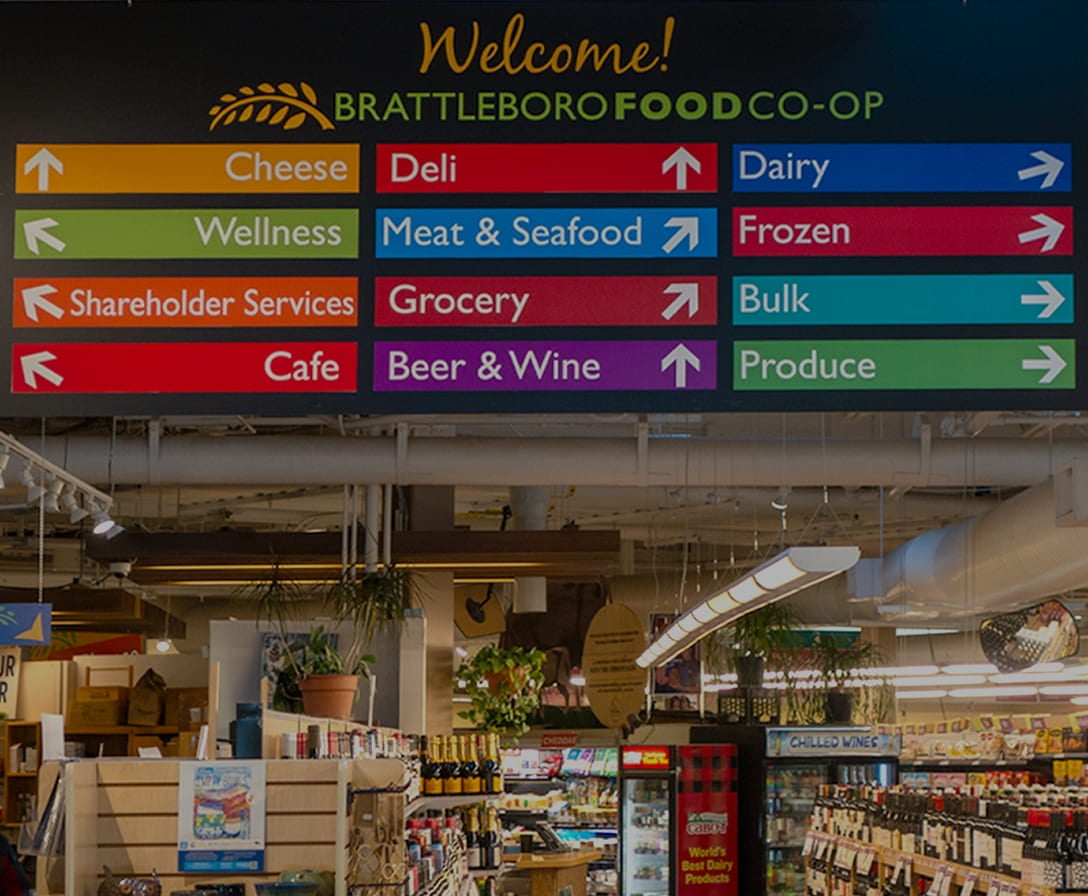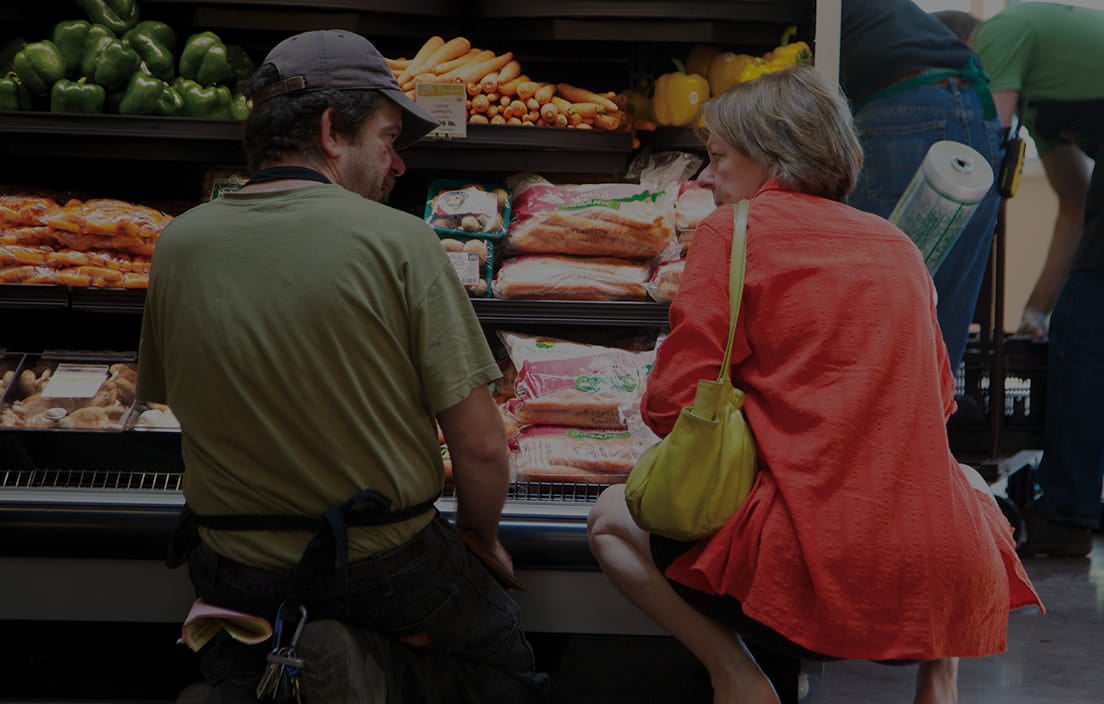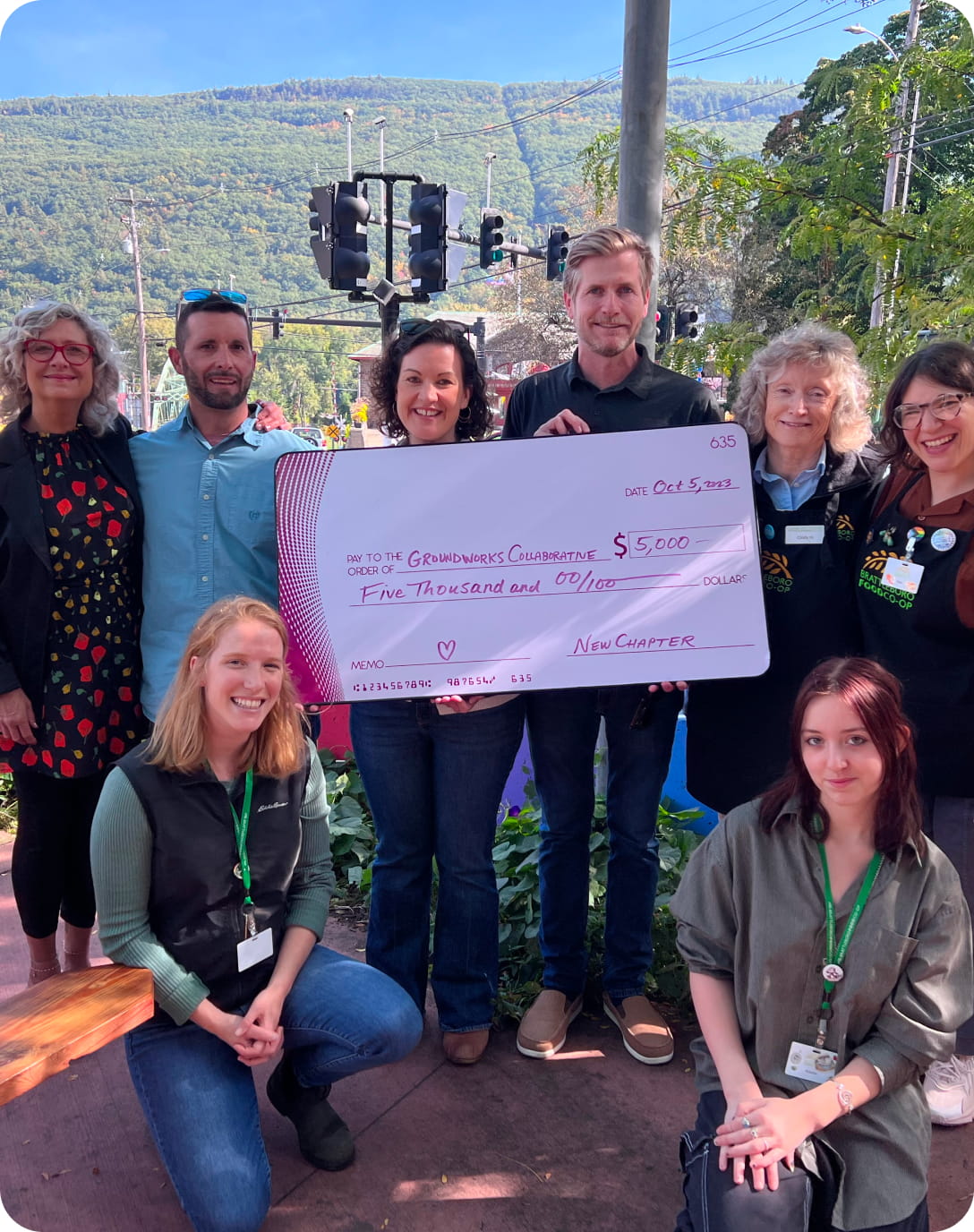Cooperatives in a Collaborative Economy
We all have our own ways to officially welcome summer. There are the Memorial-Day-weekend folks, the last-day-of-school folks, and the day-the-pool-opens folks. And let’s not forget the Strolling of the Heifers weekend, this year paired again with the Slow Living Summit. Our Co-op once more represented proudly with our crackerjack Shopping Cart Precision Drill Team, an amazingly athletic and complex labor of love at which the rest of us can only marvel.
Regardless of your opinion about the Stroll and the attendant impact, there are several things about the event and the Slow Living Summit that merit some reflection. First of all, it’s a good time. (And this is from a sometime curmudgeon who dearly loathes giving away a sunny day in the garden—particularly this year.) But it’s true: I saw so many familiar faces along the parade route this year, all enjoying the event, and showering us with “co-op love,” something we can never get enough of. “We love our Co-op!” rang out, over and over again, all the way up Main Street.
Thank you.
We get lots of feedback, much of it thoughtful and important, which makes us a better organization. But, like all humans, it takes more effort sometimes to remember the good stuff and to be expressive of that too. We really do appreciate the love, and we thank you for offering it up to us.
It also forces one to think about our agricultural economy and how we interact with it, whether in our shopping and buying habits, or in our expectations of the role of farmland in our aesthetic, or in our opinions of H-2 visas and fair labor standards. Admittedly, these are not issues overtly exposed in the parade entries, but our role as consumers and as owners of a cooperative business that exists partly to better support our local farmers and producers always begs us to think more deeply about these related issues, and to act on them. Maybe not every hour, or even every day, but in our choices at every level.
I also had the chance that week at the Slow Living Summit to appear on a panel with three other cooperators from the area: Erbin Crowell, from the Neighboring Food Co-op Association, a network of 35 co-ops and start-up initiatives that the BFC belongs to and supports, along with Kristin Howard, from worker co-op Real Pickles, and Tony Risitano, from Deep Root Organic Co-op, a farmers’ co-op. The title of the session was “Co-ops and Their Role in the Collaborative Economy,” pointing out how “cooperative business provides a vehicle for collaborative entrepreneurship and the role that co-ops play in building more sustainable, resilient, and participatory food systems and economies.” Our Co-op alone has measurable impact in our region due to our collaborative approach to a sustainable future. As I told the standing-room-only crowd in that workshop session, we return about 37% of our revenue to the community in the form of local purchases, goods and services, payroll, and taxes. We partner with over 130 area organizations and schools through collaborative programs, outreach opportunities, and donations. This calendar year, over 300 volunteer hours a month are performed in the community for other non-profit organizations by BFC shareholders who receive credit in their Co-op work hours for this effort. And don’t forget, we collaborated with our local housing trust to design and build an energy-efficient building using local materials to provide 24 apartments downtown as well as a beautiful store that continues to impress.
My fellow panelists talked about their own cooperatives’ missions to serve their members and their local economies in very strategic and measured ways, highlighting for me all the ways in which our cooperative endeavors get at the most important stuff and work, often too quietly, on making our region truly sustainable and vital. Real Pickles preserves our farms’ harvests at their peak and makes them available to us year-round, while Deep Root extends the harvest potential to many farmers throughout the region and even in partnership up and down the east coast, increasing our own access to organic produce.
So as you breathe in this summer that teased us for so very long this year, remember your very important role in our sustainable regional economy. Cheer your local farmer when you buy that produce, acknowledge those beautiful brown Jerseys when you buy your organic yogurt. They parade their stuff up and down our aisles and in your town’s farmers market every day of the year, and your participation in our Co-op makes you an active collaborator too!
 by Sabine Rhyne,
by Sabine Rhyne,
General Manager
About Producer of The Month

Shop Online

On Sale Now!

